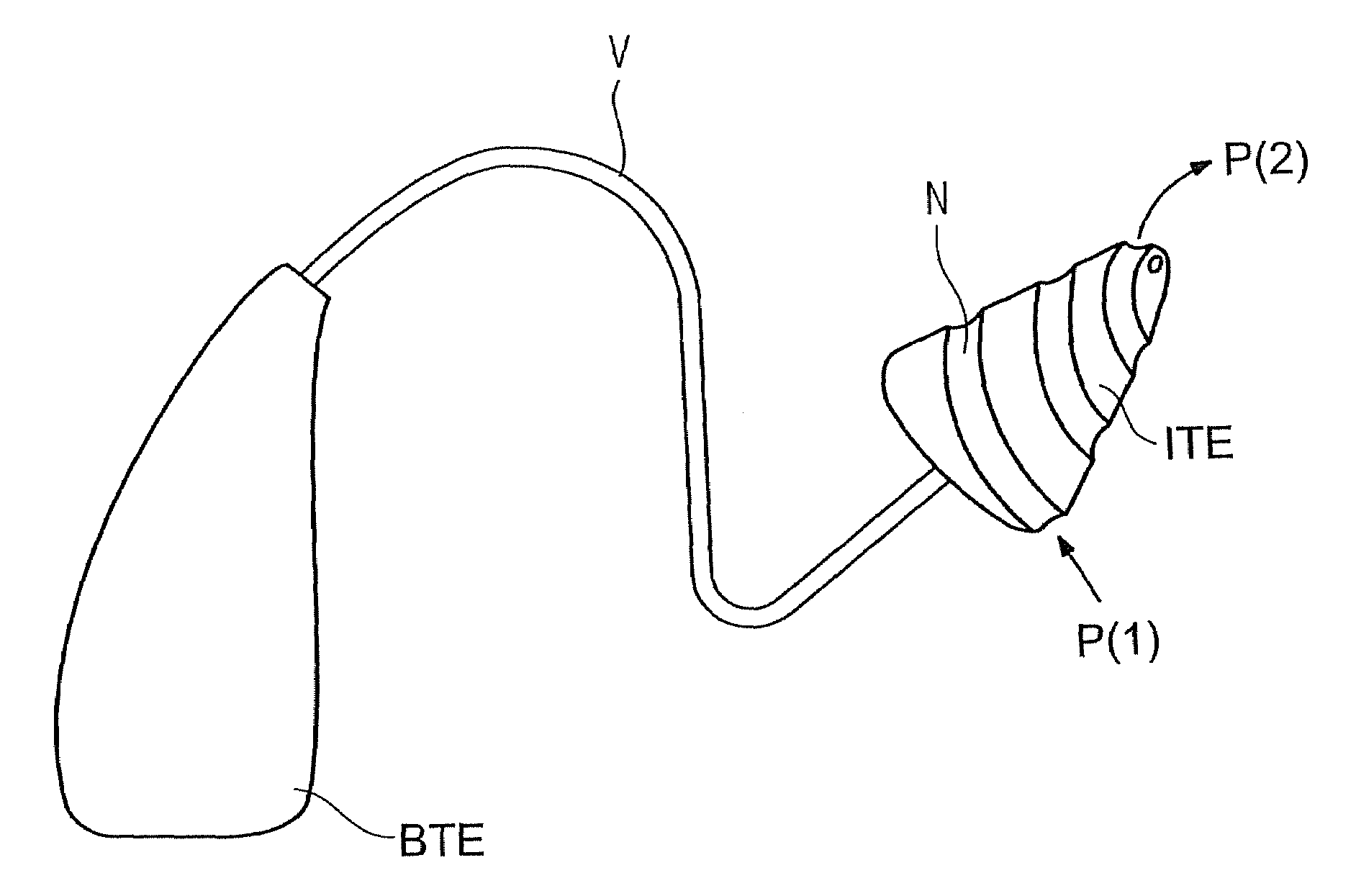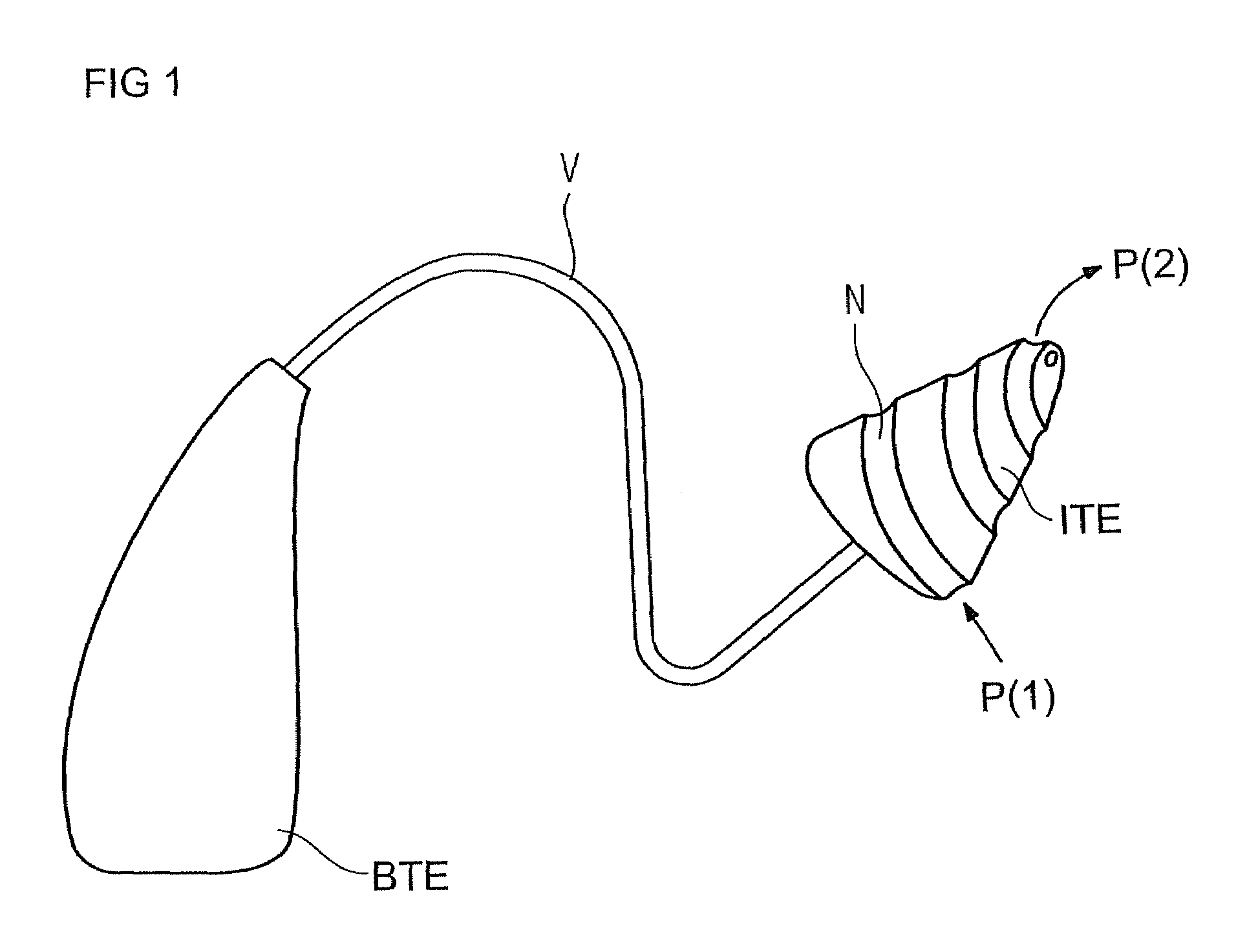Hearing device and corresponding method for inserting the hearing device
a hearing device and hearing technology, applied in the field of hearing devices, can solve the problems of unintentional insertion of receivers too deeply into auditory canals, receivers that must be relatively loose in the auditory canal, and could slide, etc., and achieve the effect of reducing the risk of sliding and being comfortable to wear
- Summary
- Abstract
- Description
- Claims
- Application Information
AI Technical Summary
Benefits of technology
Problems solved by technology
Method used
Image
Examples
Embodiment Construction
[0022]The exemplary embodiment described below in further detail represents a preferred embodiment of the present invention.
[0023]Referring to FIG. 1, the hearing device shown in the figure is made up of a BTE part and an ITE part. In the present case the ITE part has a receiver.
[0024]Both the BTE part and the ITE part are connected to a rigid linking element V. This linking element V serves to transmit electrical signals from the BTE part to the receiver of the ITE part. Furthermore it serves to fix the hearing device to the auricle of the hearing device wearer. It also serves to insert the ITE part into the auditory canal since the ITE part can be easily guided and / or rotated by means of the rigid linking element V.
[0025]The linking element V has a wire for instance as a core and this is enclosed in a plastic along with an electrical linking line. The linking element V is essentially rigid and would be damaged in the event of deformation. Deformation is only possible for example w...
PUM
 Login to View More
Login to View More Abstract
Description
Claims
Application Information
 Login to View More
Login to View More - R&D
- Intellectual Property
- Life Sciences
- Materials
- Tech Scout
- Unparalleled Data Quality
- Higher Quality Content
- 60% Fewer Hallucinations
Browse by: Latest US Patents, China's latest patents, Technical Efficacy Thesaurus, Application Domain, Technology Topic, Popular Technical Reports.
© 2025 PatSnap. All rights reserved.Legal|Privacy policy|Modern Slavery Act Transparency Statement|Sitemap|About US| Contact US: help@patsnap.com



